February 26th, 2010 by Nobuyuki Kawai
Soichi Noguchi, the Japanese astronaut currently onboard the ISS, installed a new data converter
for MAXI. MAXI has two channels for the data telemetry. One
is the “low speed line”, or, if you are familiar with the space flight
tech, MIL-STD-1553B, which is robust and reliable, but the bandpath is
limited. The other is called “medium speed line”, which is
in fact a wired ethernet similar to what you find in your office, and
should be able to transmit mega bits per second. GSC
can transmit the essential science data over the low speed line, but SSC
relies heavily on the medium speed line. Due to a
misunderstanding in a network protocol, combined with the design feature
of MAXI data processor, the transmission over the ethernet was never
smooth. We had to modify the header in the ethernet packets, and
had to filter out broken or illegal ethernet frames which can occur in a
crowded LAN. Since a few months after the launch, we used a
laptop computer already present in JEM as a filtering bridge, but it was
not stable either. Several times we had to reboot MAXI to recover
the communication over the medium speed line.
With the latest shuttle flight, a new device “Armadillo” specifically
designed for this job was transported from the ground, and Soichi
installed it in the network. Now MAXI seems to be happily sending
out data in the medium speed line.
February 18th, 2010 by Nobuyuki Kawai
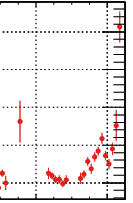
Latest X-ray light curve of Mrk 421 in 1-day biniing
Markarian 421, a BL Lac object, is currently undergoing a bright X-ray flare. We have reported the news to Astronomers Telegram #2444. Following is the posted text.
MAXI/GSC has detected a bright X-ray flare from a BL Lac object Mrk
421. Its X-ray flux increased to 156 +- 11 mCrab (1.5 – 10 keV) on 2010
February 16 (mid MJD = 55243.5) from <30 mCrab on 2010 February 14.
The current flux is higher than that in the recent bright X-ray flare
reported by MAXI on 2010 January 01 (116 +- 10 mCrab, ATEL #2368).
Multiwavelength observations of this source are encouraged.
The latest light curve and image of this source are available at the following URL: http://maxi.riken.jp/sourcelist.html.
February 18th, 2010 by Hitoshi Negoro
MAXI light curves of GX 339-4 show a sudden drop of the flux on
Feb 15, 2010. This is probably due to the shade by the solar paddles of
the ISS, and not real. Some data on Feb 16 show that the source
having a hard spectrum seems to be brighter.
Observational condition near the Galactic center including GX 339-4
has been wrong since the beginning of this month. The method of
corrections for the shade of the paddles and a space shuttle are still
under development.
Posted in Galactic, System, compact source | Comments Off
February 10th, 2010 by Mikio Morii
The 33ms pulsation of Crab pulsar
was detected by MAXI/GSC. The timing information of X-ray photons were
verified to be correct. The figure shows data from Jan. 1
to Jan. 7, 2010. 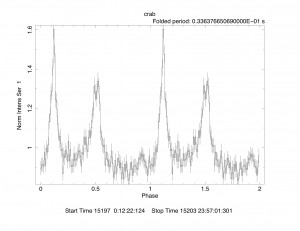
February 4th, 2010 by Mikio Morii
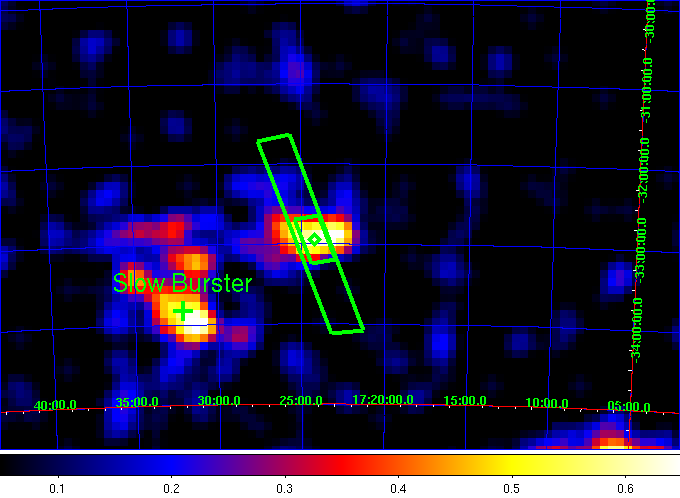
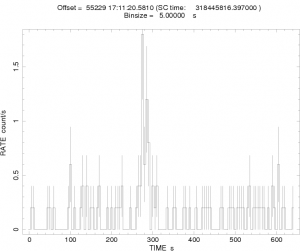
The MAXI team reported a detection of a transient X-ray source to GCN (#10359) and Atel (#2415). The pictures above show the error box of the position and the light curve (in 2-20 keV) of the transient.
January 31st, 2010 by Mitsuhiro Kohama
The MAXI team reported 8 detections of the transient events to Astronomer’s Telegram (ATEL)
in January, 2010.
January 25th, 2010 by Mitsuhiro Kohama
On Saturday Jan 23, JEM operation team and MAXI
team performed the file transfer test between the TKSC ground
station and MAXI via ICS-Japanese satellite network, successfully.
ICS (Inter-orbit Communication System) on Kibo provides an
independent communication-network between Kibo and the Tsukuba Space
Center (TKSC, JAXA). See details here.
January 10th, 2010 by Mitsuhiro Kohama
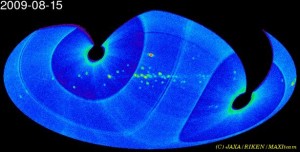
MAXI/GSC all-sky movie is attached.
(You need Windows Media Player for watching.)
Each one frame correspondence to accumulated one day GSC observation.
You can see various famous X-ray sources.
December 31st, 2009 by Mitsuhiro Kohama
The MAXI team reported five detections of the transient events to Astronomer’s Telegram (ATEL)
in December.
And MAXI team also reported one short X-ray transient event to GCN: The Gamma-ray bursts Coordinates Network.
December 28th, 2009 by Motoko Serino
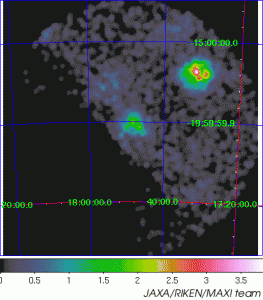
MAXI/GSC detected an X-ray outburst from the globular cluster,
NGC6440. Observed flux of the source in the 4-10 keV band was about 250
mCrab on 2009 December 22.8 UT. MAXI/GSC could not detect the
source before 2009 December 6 UT, and the X-ray flux level in the same
energy band from the same region was lower than about 10 mCrab. We could
not observe the beginning of the outburst due to the avoidance of solar
X-ray.
In addition, MAXI/GSC detected a rapid flare, that looks like a
type-I X-ray burst, from the source during the transit starting at
05:48:20 (UT) on December 28.
NGC6440 is a globular cluster, which is known as containing at least
two transient X-ray sources. A bright transient was observed a few
times (for example In’t Zand et al. 1999, A&A 345, 100; Verbunt et
al. 2000, A&A 359, 960; Markwardt and Swank 2005, Atel #495).
Recently a new transient was found (Heinke et al. 2009, Atel #2139;
Altamirano et al. 2009, arXiv:0911.0435v1) in NGC6440, but observed flux
is rather low (7 mCrab, Heinke et al. 2009, Atel #2143).
MAXI is unable to resolve separately these sources due to its spatial
resolution of about 1 deg. The X-ray flux of this outburst,
however, suggests the source is the former transient known as SAX
J1748.9-2021.
You may see MAXI light curves through the below URL:
http://maxi.riken.jp/top/index.php?cid=000000000001&disp_mode=source
(Note that X-ray counts, especially in the soft X-ray light curve, are
much affected by the solar X-ray contamination from December 22 to 23.)
MAXI will continue to monitor this source.
Follow-up observations with multi-wavelength are encouraged.





